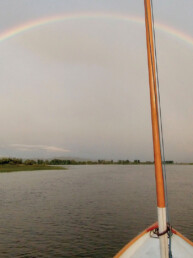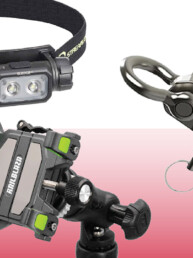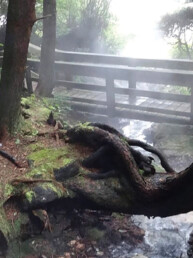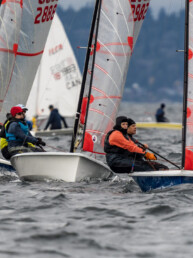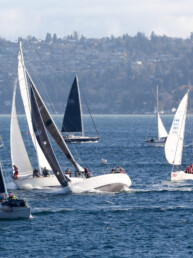Is it Time For a Drysuit?
From the March 2021 issue of 48° North.
On my first real camp-cruising expedition, I had grand ambitions. With three weeks off from work, and having escaped parental responsibilities, my destination didn’t matter. I was going to get dropped off in Olympia and head north, wherever my will would take me. I had but one rule: come back alive.
Besides all the important stuff in my boat — like granola bars, books, and booze — I also stowed two bags of emergency equipment. One held a standard first-aid kit, a flashing emergency light, and a Leatherman tool. The other was filled with a complete change of clothes, should I get wet. And getting wet was a significant concern. It was September, and the water in that area of the Salish Sea was at its typical temperature for that time of year, around 58 degrees. With a freeboard of about eight inches at the oarlocks, an errant wave could put some water into my guideboat. Should that happen, I wouldn’t be warm long once I was wet.
Despite my preparations, I lacked one particular piece of equipment. I thought I might need it in the conditions I’d encounter, but balked at the price; and besides, I didn’t really want to wear it: a drysuit. If you’re not familiar with them, a drysuit is a one-piece, full-body outfit that covers you from neck to toes and is constructed of high-tech, waterproof, somewhat breathable cloth. Tight rubber gaskets at the wrists and neck prevent water from getting inside, keeping the wearer completely dry. But the idea of wearing a rubber gasket around my neck for several weeks seemed intolerable.
The day before I was to leave, I still hadn’t purchased a suit and didn’t intend to. Then, on an errand to the local sporting good shop, I passed the closeout rack, populated as usual with gaudy colors, sizes to fit giants or Lilliputians, and wacky gear that should never have made it past the drawing board. Yet, amid all this, something caught my eye. A lone drysuit the color of grape juice hung next to the other dreck. It was exactly my size, a premier brand, and more than half off the normal price. Despite the curious plummy purple color, I took it as a sign from on high that I should make the purchase.
I still chafed at the idea of wearing it. The gaskets were annoying, and I felt like a toddler in a snowsuit when I tested it around the house. Instead, I decided to wear wool and synthetic clothes on the calm days that prevailed. All was well — until I faced my first big crossing. Staring at the four-mile stretch of lumpy water, I couldn’t help feeling daunted. Better safe than sorry, I decided, and pulled out Big Grape.
Wearing the drysuit on that crossing was a revelation. Despite the gaskets, I didn’t even notice I was wearing it. I just felt more confident, if a little sweaty.
Ten years later, I’m still a bit reluctant to don my drysuit, although not because of the potential discomfort I feared back then. Now I consider the suit an essential piece of gear for the small boater in the Pacific Northwest. Why? Because when I wear it, I know I’m heading into potentially dangerous conditions: big waves, strong currents, or hypothermia-inducing weather. The need for a drysuit is a wake up call, prompting me to ask myself: Are you ready to give a top performance today?
If the answer is yes, I start the methodical process of getting myself and my gear ready for action. (You must put the drysuit on before you’re in the doo-doo.) That means taking off my boots, slipping the suit onto each leg, removing my watch and hat, then stretching the gaskets over my extremities. Finally, I zip it shut and squeeze out as much air as possible, lest I look and feel too much like the Michelin Man.
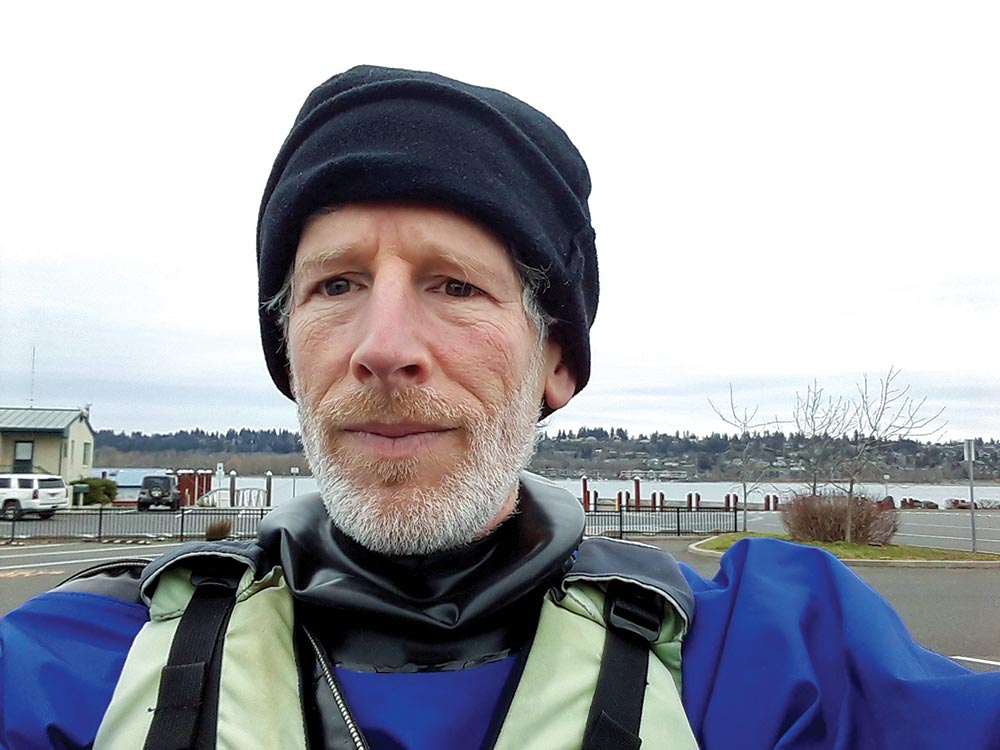
Once suited up I feel — physically and mentally — as though I’m in a spacesuit. Sure, I’m a bit bulkier than normal, but I also feel like the fearless captain of my own ship, a nautical Jean Luc Picard. I know that with the right clothes underneath, I’ll be protected from rain, spray, cold, or even a tumble into the water. Warm and dry, with no need to worry about getting wet, I’m free to focus on keeping the ship and crew in good condition. I respond to the elements with the sense that a force field surrounds me.
A few winters ago, I was desperate to go sailing, but on a drizzly, gray day, nobody wanted to accompany me on the Columbia River. The air temperature was around 40, so I donned my drysuit. With a reef in the mainsail, and a strong westerly wind, I was able to buck the current. I tacked back and forth for an hour or so before the wind started to shift and get stronger. Then a gust filled the mainsail as I was tacking, and I suddenly lost control. Seemingly in slow motion, I watched the sail and mast hit the water and the cockpit fill. Then I automatically leaned out of the cockpit and climbed onto the high side of the boat. Feeling calmer than I expected to, I assessed the situation and slid down to the centerboard that was now parallel with the water. Like a dinghy sailor, I used my weight to roll the boat back upright and scrambled into the cockpit.
When I’d lowered the sails and bailed some 20 gallons of water, I stopped to check myself out. Gloves and boots wet. Body, arms, and legs bone dry and warm. Once again, my spacesuit had helped me make another safe trip to the edge of the watery universe and home again. Still alive.
Bruce Bateau
Bruce Bateau sails and rows traditional boats with a modern twist in Portland, Ore. His stories and adventures can be found at www.terrapintales.wordpress.com


